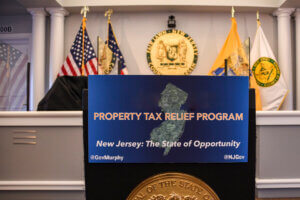In April, the Monmouth University Poll released a unique, comprehensive survey examining New Jersey’s quality of life from a wide variety of resident perspectives. This current release focuses on differences in perceptions of quality of life from state residents of different racial and ethnic backgrounds.
The initial report established a benchmark Garden State Quality of Life Index. Among all state residents, the index currently stands at +21 (on a scale -100 to +100). There are some clear differences among New Jersey’s different racial and ethnic groups. The Garden State Quality of Life Index score of Hispanics (+21) matches the overall state average, while the index scores of white (+26) and Asian (+29) residents are slightly higher. Black New Jerseyans, with an index score of +3, are significantly less positive in evaluating their home state’s quality of life.
There are also some interesting differences by educational attainment within these groups. In general, college educated New Jerseyans score higher on the Garden State Quality of Life Index than non-college educated state residents. These differences, however, do not erase the racial ethnic differences. Black college graduates (+18) score lower than white college graduates (+33), but they also score lower than white New Jerseyans who did not graduate from college (+21).
One basic measure of New Jersey’s quality of life is to simply ask residents about their overall view of the state as a place to live. About 2-in-3 white (66%), Hispanic (66%), and Asian (71%) residents have a positive view of the state. However, less than half (49%) of black residents share that view.
Overall, more white (79%) and Asian (79%) residents have positive opinions of their hometowns than of the state as a whole, while Hispanic (65%) and black (53%) residents are about as likely to rate their town positively as they do the state.
When asked about personal safety in their own neighborhood at night, 67% of white residents feel very safe, compared to 55% of Asians, 45% of Hispanics, and 39% of blacks. This 12 point difference between white and Asian residents is noteworthy since Asians aren’t any more likely than whites to see crime as a general problem for the state.
The largest difference for residents’ evaluations of their local institutions (e.g. government, schools, first responders) revolves around local police. About 2-in-3 (68%) white residents express a lot of trust in their local police department, followed by 57% of Asians, 54% of Hispanics, and 43% of blacks. That puts 25 percentage points between black and white New Jerseyans when it comes to trust in their local police department.
The Monmouth University Polling Institute also created a Local Area Rating Index based on 15 different questions where residents rated their local area on a wide range of issues ranging from safety to economic opportunities to the availability of cultural programs and health care. Overall, Asian New Jerseyans are the most likely (51%) to have a positive view of their local area, followed by white (41%), Hispanic (35%), and black residents (23%). Interestingly, the views of Hispanics from Puerto Rico (24%) and the Caribbean (24%) are more in line with those of black residents, while the views of Hispanics from Central and South America (41%) are in line with white residents.
“About 4-in-10 New Jerseyans are from traditionally defined minority groups. The fact that there are such stark racial differences in perceptions of the Garden State’s quality of life poses significant challenges for policymakers,” said Patrick Murray, director of the Monmouth University Polling Institute.
Race relations are also viewed very differently by various racial groups in New Jersey. About 1-in-3 white (36%) and Asian (30%) residents believe racial and ethnic discrimination is at least somewhat of a problem in the state. This increases to 49% among Hispanics and 55% among blacks. It’s also worth noting that among Hispanic New Jerseyans, Puerto Ricans (64%) are more likely than those from the Caribbean (48%) or elsewhere in the Americas (45%) to feel discrimination is a problem in the state.
The American Conference on Diversity also posed this question to New Jerseyans in surveys conducted in 1996 and 2007. The overall sense of discrimination has decreased from a statewide high of 61% in 1996 to 44% in 2007 and 40% in the current survey. In 1996, the state was embroiled in a racial profiling controversy involving the State Police.
During that period, the level of concern among white residents about racial and ethnic discrimination declined from 62% in 1996 to 38% in 2007, and held steady at 36% in the current poll. There is a similar trend among black New Jerseyans although the decline was not as steep, with concerns about racial discrimination going from 67% in 1996 down to 58% in 2007 and 55% in the current survey. Among Hispanic residents, views of racial discrimination being a problem did not lessen until very recently, standing at 64% in 1996 and 61% in 2007, before declining to 49% in the current survey.
When asked about racial and ethnic tension in their own town, the numbers are similar. Among black residents, 53% think that there is at least some tension. Among Hispanics, 44% feel the same. Less than 1-in-3 Asians (31%) and whites (28%) think that there is at least some tension. These results are nearly identical to the 1996 American Conference on Diversity survey for whites, blacks, and Hispanics. However, all racial groups were more positive in the 2007 survey, with just 37% of blacks, 33% of Hispanics, and 21% of whites reporting at least some racial or ethnic tension in their own community.
The survey also asked if state residents feel immigration has had a positive or a negative impact on New Jersey. The state as a whole is divided: 1-in-3 (34%) think it has been a good thing and 1-in-3 (32%) think it has been bad, for a net impact score of +2. Asians are the most positive about immigration’s impact on the state at +58. Hispanics are also more positive than negative about immigration, with a net impact score of +20. Black residents are divided, with a net number of +1. Whites are the only group with a negative net number of -8, meaning more white residents think of immigration as being bad rather than good.
**********************************************************************
A more comprehensive description of the survey results by race and ethnicity can be found in the Monmouth University Polling Institute report, available at: https://www.monmouth.edu/polling/admin/polls/NJQualityofLife_Race_June2011.pdf .
Funding for the Garden State Quality of Life project was provided by the Plangere Foundation, New Jersey Resources, First Energy Corporation, and sanofi-aventis.
Survey Methodology: The Garden State Quality of Life survey was conducted by the Monmouth University Polling Institute from December 1 to 15, 2010 with a statewide random sample of 2,864 adult residents. Sampling and live telephone interviewing services were provided by Braun Research, Inc. Smaller counties were oversampled so that the final survey included at least 100 survey respondents from each of New Jersey’s 21 counties. Racial and ethnic minorities were also oversampled by screening for appropriate respondents in areas of minority population concentration. This resulted in sub-samples of 272 black respondents, 236 Hispanic respondents, and 210 Asian respondents. The survey results were then weighted to accurately reflect the New Jersey adult population for gender, age, education, race, and county.
For results based on the total sample, one can say with 95% confidence that the error attributable to sampling has a maximum margin of plus or minus 1.8 percentage points. Sampling error increases as the sample size decreases, so statements based on various population subgroups, such as separate figures reported by gender or party identification, are subject to more error than are statements based on the total sample. In this report, the sampling error for the whites is ± 2.2%, for blacks ± 6.0%, for Asians ± 6.8%, and for Hispanics ± 6.4%. When breaking down the Hispanic population into subgroups by region of origin, the sampling error ranges from 11 to 14 percentage points. In addition to sampling error, one should bear in mind that question wording and practical difficulties in conducting surveys can introduce error or bias into the findings of opinion polls.




